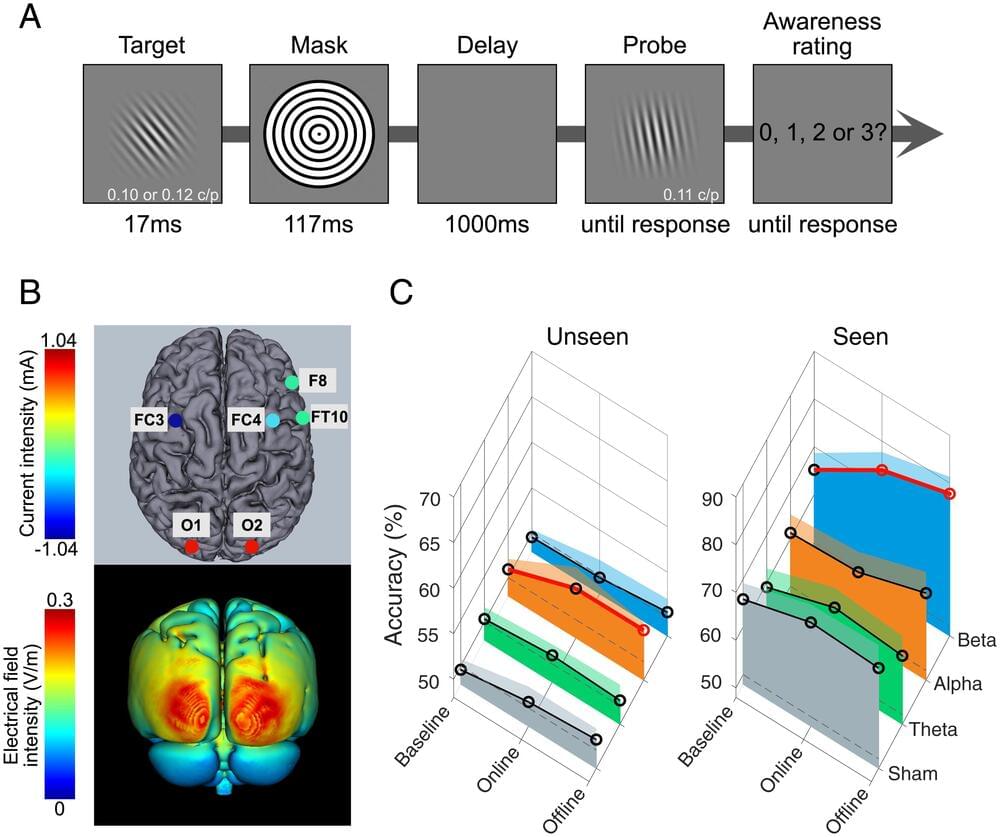Understanding the neural mechanisms of conscious and unconscious experience is a major goal of fundamental and translational neuroscience. Here, we target the early visual cortex with a protocol of noninvasive, high-resolution alternating current stimulation while participants performed a delayed target–probe discrimination task and reveal dissociable mechanisms of mnemonic processing for conscious and unconscious perceptual contents. Entraining β-rhythms in bilateral visual areas preferentially enhanced short-term memory for seen information, whereas α-entrainment in the same region preferentially enhanced short-term memory for unseen information. The short-term memory improvements were frequency-specific and long-lasting. The results add a mechanistic foundation to existing theories of consciousness, call for revisions to these theories, and contribute to the development of nonpharmacological therapeutics for improving visual cortical processing.







